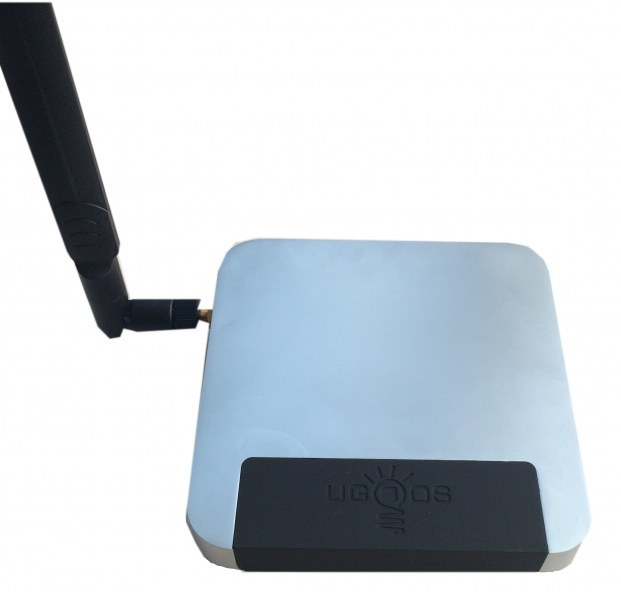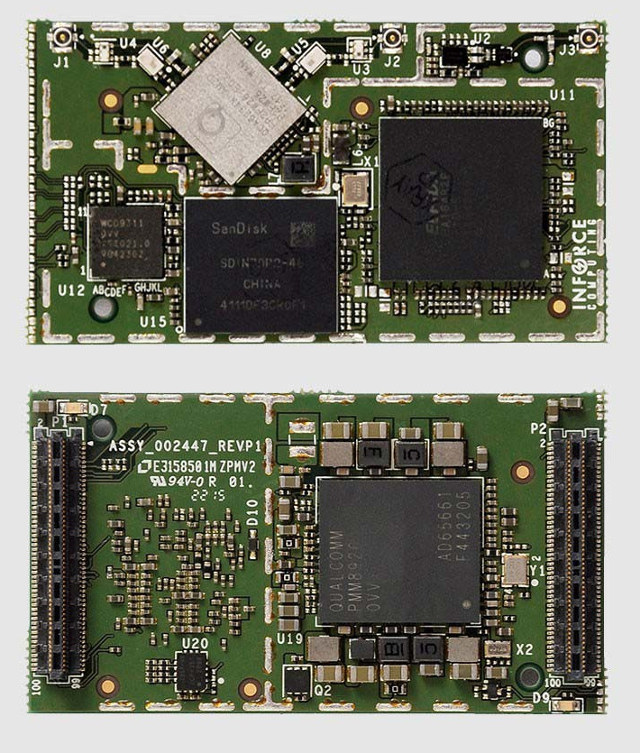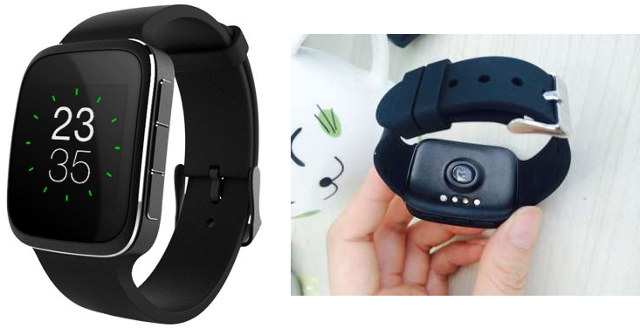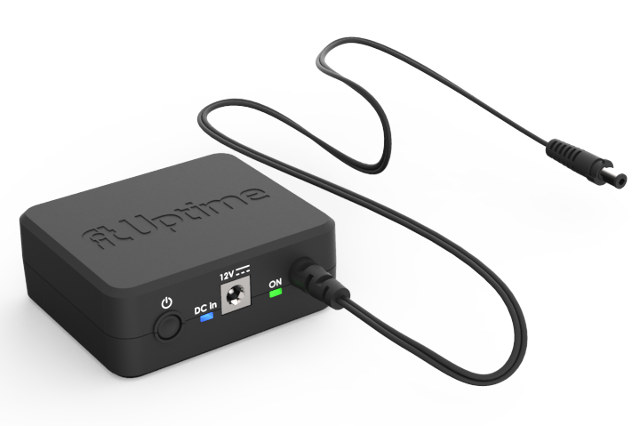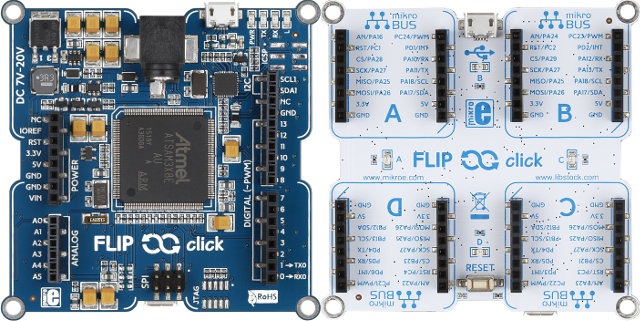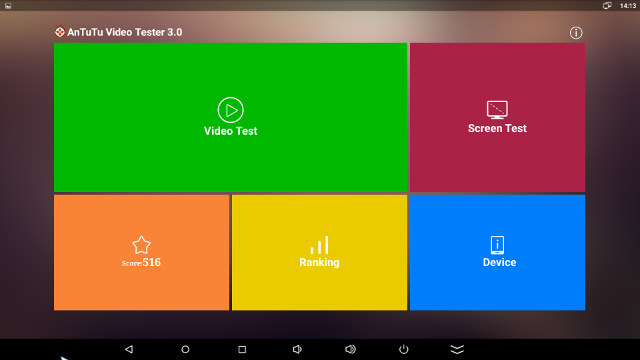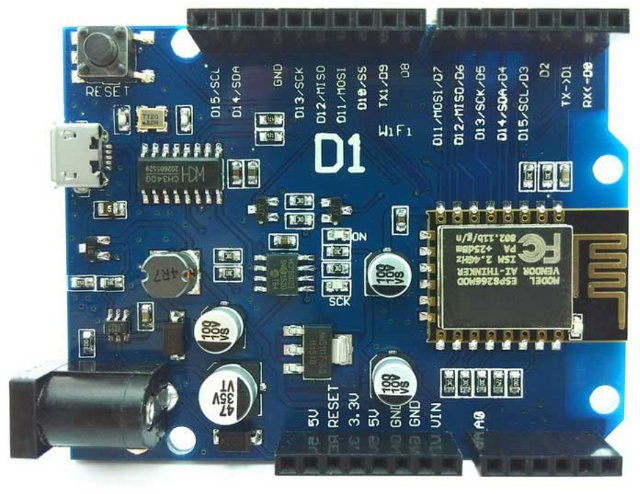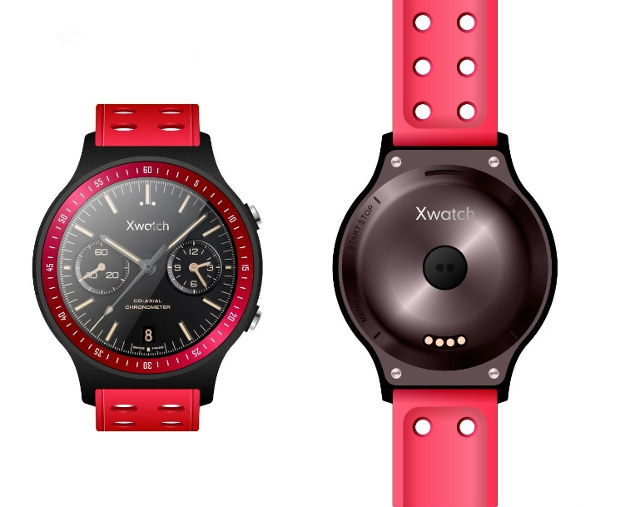Ugoos has been working on four new TV box models for the end of year, and one of them is Ugoos UT3+, an Android 4.4 TV box powered by Rockchip RK3288 processor that includes an HDMI input. While it’s not the first RK3288 mini PC with an HDMI input, AFAIC it is the first that supports both picture-in-picture (PiP), and video recording function (DVR), which are also supported by Zidoo X9, but with an Mstar processor. Ugoos UT3+ specifications: SoC – Rockchip RK3288 quad core Cortex A17 @ 1.8 GHz with ARM Mali-T764 GPU System Memory – 2GB DDR3 (1GB optional) Storage – 16GB NAND Flash (Options: 8, 32 or 64GB) + micro SD slot up to 32 GB Connectivity – 100/1000M Ethernet, dual band WiFi 802.11 b/g/n (2.4GHz/5GHz) and 802.11ac with external Wi-Fi antenna Video I/F Output – HDMI 1..4 output up to 4k2k @ 30 fps Input – […]
Inforce Computing 6401 Micro SOM is a Qualcomm Snapdragon 600 System-on-Module
Inforce Computing announced their 6501 Micro SOM system-on-module based on Qualcomm Snapdragon 805 processor in Q2 2015, and the company informed me that they had just unveiled a lower power version based on Snapdragon 600 processor called 6401 Micro SOM, and still featuring WiFi, Bluetooth 4.0, and GPS connectivity on module. Inforce 6401 Micro SOM: SoC – Qualcomm Snapdragon 600 (APQ8064) quad core Krait processor up to 1.7 GHz with Adreno 320 GPU, and Hexagon DSP v4 up to 500MHz System Memory – 2GB PoP LPDDR2 @533Mhz (Optional 3GB) Storage – 4GB eMMC v4.4.1/v4.5, with options up to 64GB Connectivity – BT 4.0 , dual band 802.11n/ac Wi-Fi (QCA6234), and GPS (WGR7640) with WiFi and GPS antennas on carrier board Peripherals and I/O via two 100-pin SoM connectors: Video / Display – 1x HDMI, 2x MIPI-DSI (4-lane) & touch screen Audio 4x Line out, 3x Mic-in, 1x headphone out 8-channel […]
SMA-Q Bluetooth Smartwatch Features a Color E-Paper Display, an Heart Rate Monitor… for $56 and Up
My Vidonn X5 activity tracker died on me a few weeks ago about over a year of service. While it was useful to keep me active thanks to its “steps” counter, I realized I was not a big fan of OLED displays as they aren’t turned on all the time in order to save power, and are hard to read when there’s a strong sunlight, the battery did not last that long (about 2 days), and using motion sensors to evaluate activity is not that accurate. So I’m interested in wearables with always-on displays, readable in sunlight, that don’t suck too much battery (e.g one charge per week), and with a strapless heart rate monitor. The first three are normally only achievable with E-Ink or E-Paper displays and the latter have become much more common thanks to electro-optical heart rate monitors. I’m also a budget conscious guy, so I’d like […]
Compulab fit-Uptime is a 12V mini UPS for Intel NUCs, fit-PCs, and More
Power failures can cause loss of data, or if you are unlucky even brick your devices, and for business users there may be a maintenance cost. UPS (Uninterruptible Power Supplies) prevent those issues by providing power when the mains fail, and while they are relatively inexpensive, they are quite bulky. That’s probably Compulab designed fit-Uptime a mini UPS taking 12 to 19V input and outputting 12V to keep mini PCs such as the company’s fit-PCs or Intel NUCs for a couple of hours. fit-Uptime specifications: Capacity – 18 watt hour Input: DC 12V to 19V Output on battery – DC 12V / 5A Output when powered – 12V to 19V (same as input) / 5A Battery – Lithium polymer built-in non-replaceable (good for up to three hours) Dimensions – 6.8 cm (l) x 8 cm (w) x 3.2 cm (h); Power jack: 5.5mm x 2.5mm barrel Weight – 240g The […]
Flip & Click Board with Atmel SAM3X8E MCU Features 4 mikroBUS Sockets & Arduino Headers
HummingBoard Gate introduced last month was the first board I saw with a mikroBUS socket that can be used with over 150 “Click boards” by MikroElektronika adding functionalities such as sensors, OLED displays, relays, servos, and so on. But if you project don’t quite need the power of a full featured Linux board, or you simply prefer working with the Arduino IDE, MikroElektronika has just launched Flip & Click board powered by an Atmel SAM3X8E Cortex-M3 micro-controller and featuring four mikroBUS sockets on the back of the board, as well as Arduino compatible headers on the top. Flip & Click board specifications: MCU – Atmel AT91SAM3X8E Cortex M3 micro-controller @ 84MHz with 512 KB flash, 100 KB SRAM (64+32+4), also used in Arduino Due. Expansions Headers Arduino UNO compatible headers on the top 4x mikroBUS socket on the bottom USB – micro USB port for programming and power Misc – […]
How to Install Antutu Video Tester 3.0 and Video Sample Files Manually
I’ve been running Antutu Video Tester for my TV box reviews for over a year. I usually simply install Antutu Video Tester 2.2 from Google Play, then there’s a prompt offering to upgrade to Antutu Video Tester 3.0 (as for some reasons it’s not in Google Play) and once this is done, the app will download the video samples from some server before starting the test. However, recently it’s become a pain as I’ve had numerous problems installing the latest version of the app, and then downloading the video samples, as it may take 2, 3 or 4 hours to download all the necessary files from Antutu server, and once or twice I just gave up. As the problem occurred yet again today, I decided to install the benchmark app manually. China Gadgets Reviews provides several download links with AVT 3.0 apk and the video samples, and I select my […]
$9 ESP8266 D1 Board Features Arduino UNO Headers
We’ve already seen the Arduino IDE supports ESP8266(-EX) WiFi SoC, and some companies have designed Arduino shields for ESP8266 modules, but so far I had never seen an ESP8266 board with Arduino UNO form factor supporting Arduino shields, and that’s exactly what showed up in DX new arrivals RSS feed with a white label ESP-12E UNO board selling for $11.75 including shipping. The “D1” board has the following specifications: ESP8622 Module – AI-Thinker ESP12-E module (as found in NodeMCU) based on ESP8266-EX SoC @ 80 or 160 MHz with 4MB flash Connectivity – 802.11 b/g/n with PCB antenna. Supports station / softAP / SoftAP + station modes, WPA/WPA2 security. I/Os 11x Digital I/O pins 1x Analog Input pin I/O logic level: 3.3V ADC pin (A0) input voltage: 0-3.3V Debugging – Via micro USB using CH340G USB-TTL serial chip Misc – Reset button Power Supply – 6-24VDC via DC jack, 5V via […]
Bluboo Xwatch is an Android Wear Smartwatch Powered by Mediatek MT2601 SoC
So far, we’ve only seen Android Wear devices by large companies such as Motorola, LG, or Huawei, simply because you have to sign an agreement with Google in order to be allowed to load Android Wear on your device. Last year, a startup launched their own “Android Wear” watch on Indiegogo, but when Google found out the campaign got pull out since it was not going to happen. But the situation may have changed since then, as I’ve been contacted by Bluboo, which should be brand from Shenzhen Huihua Exploit Technology Co., Ltd, about their upcoming Bluboo Xwatch sports smartwatch running Android Wear, and the company confirmed they were “working with a third-party company to help them get this agreement”. I’m guessing/hoping the third party company might be Mediatek themselves. Bluboo Xwatch preliminary specifications: SoC – Mediatek MT2601 dual core ARM Cortex A7 @ 1.2GHz with ARM Mali-400 MP GPU […]


